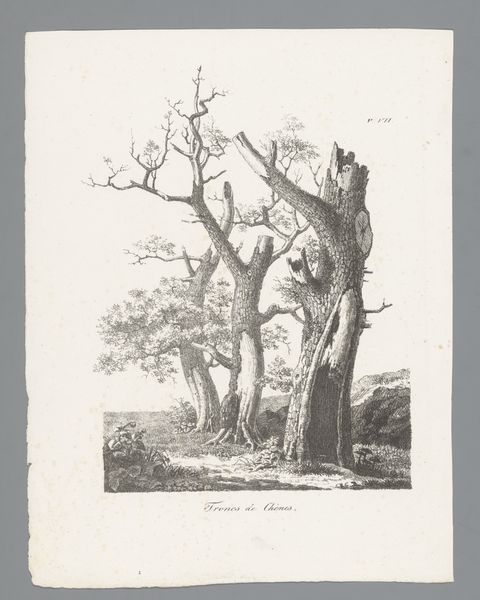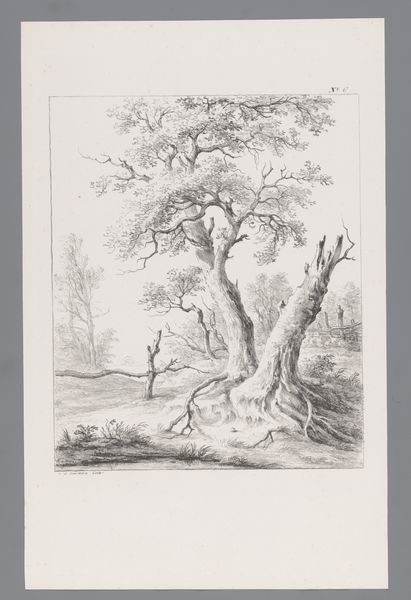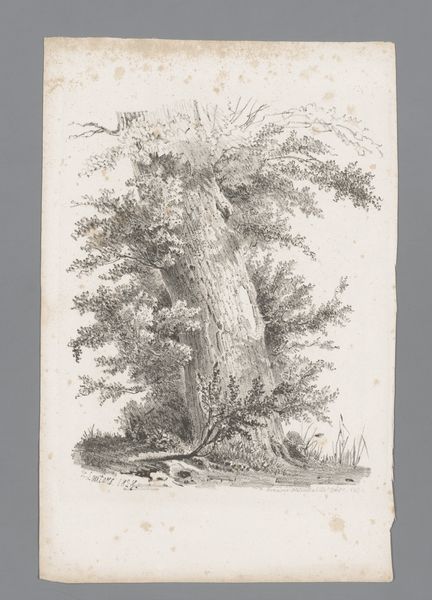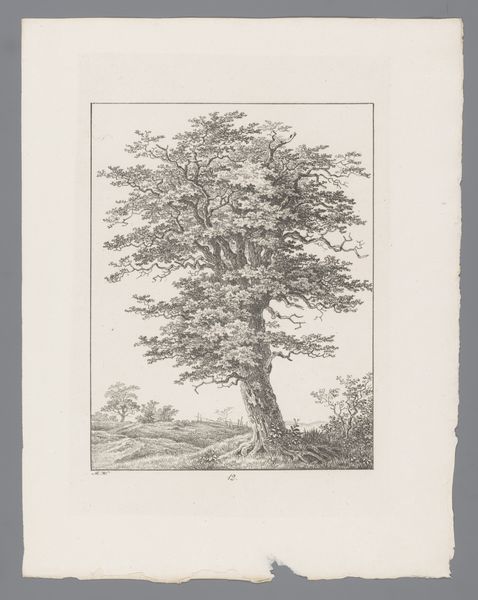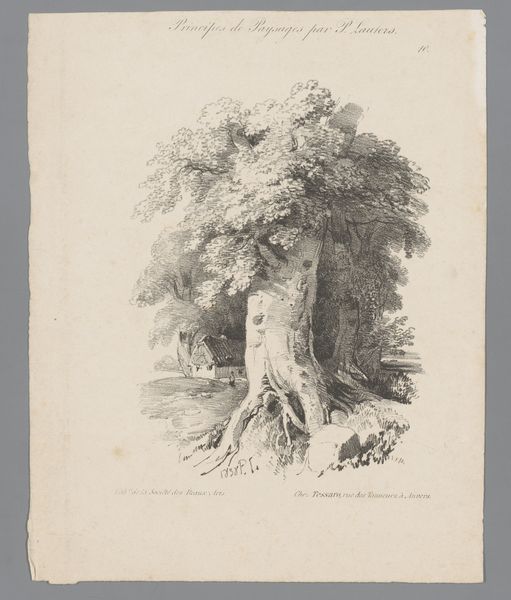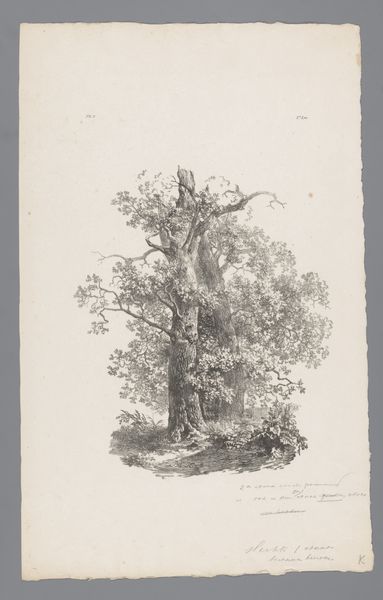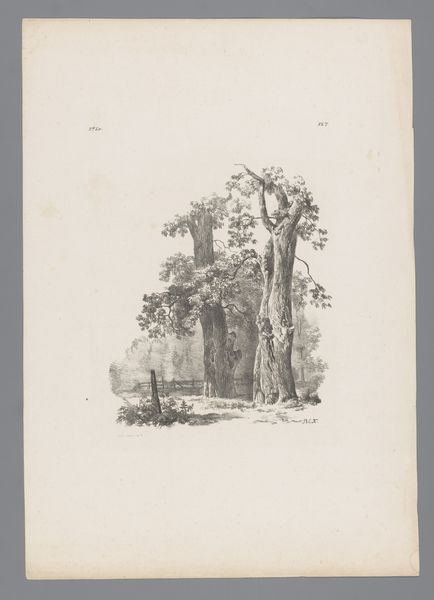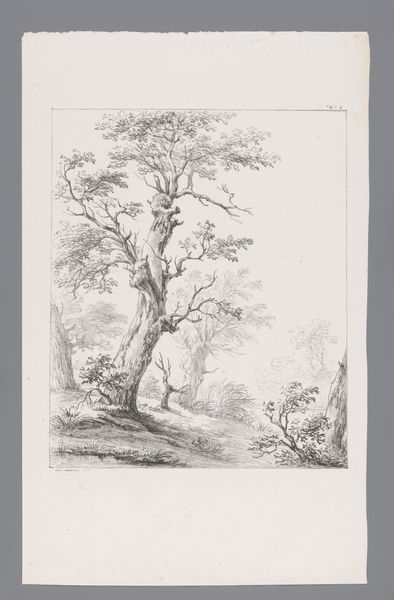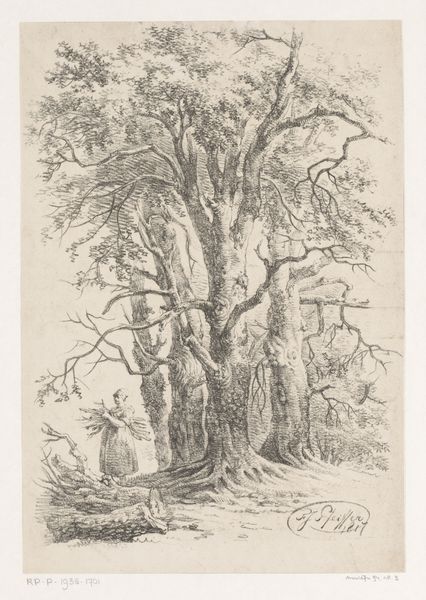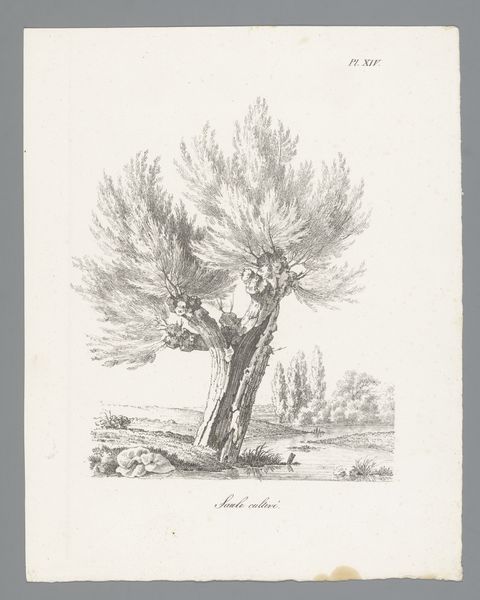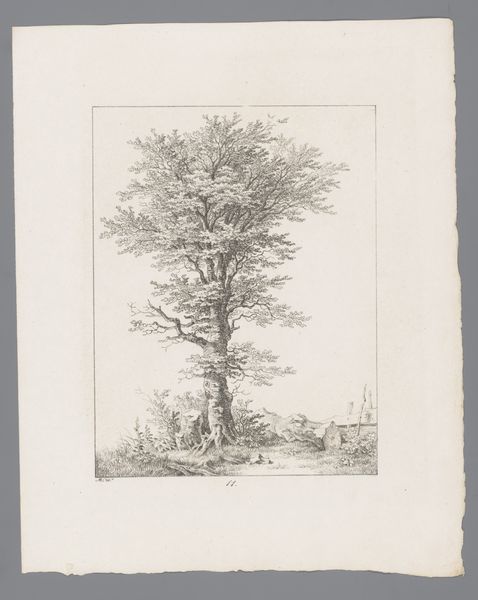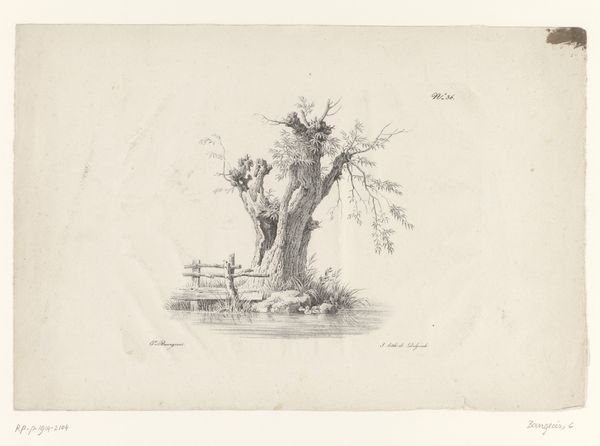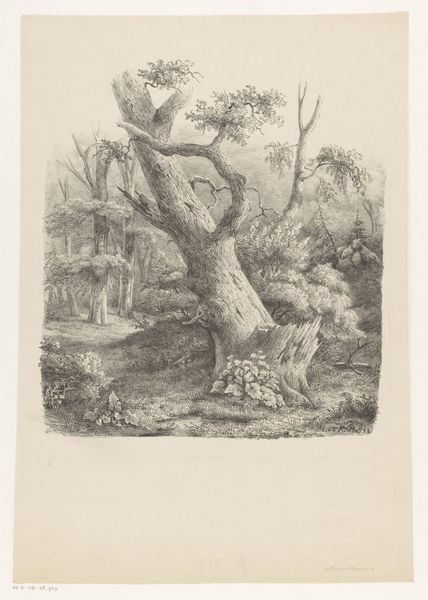
drawing, print, etching, engraving
#
drawing
# print
#
etching
#
landscape
#
engraving
#
realism
Dimensions: height 305 mm, width 234 mm
Copyright: Rijks Museum: Open Domain
Curator: Immediately I’m drawn into a strange world of stoic stillness, something so arresting about these almost skeletal trees against the whisper of the background landscape. Editor: Indeed, let’s consider "Drie stobben van kastanjes," or "Three Chestnut Trunks," an etching and engraving by J. Bernard, dating approximately from 1820 to 1833. The starkness is achieved beautifully through detailed linework, typical of the period. Curator: Linework barely whispers to describe each tree and trunk. It’s got me thinking, you know? Are they enduring some slow, patient withering, or fiercely gripping onto life, come what may? There's a kind of poetry here, about nature's persistence, resilience perhaps. Editor: It is fascinating how Bernard contrasts the delicate foliage of the chestnut trees with their robust, aged trunks. Semiotically, this might be interpreted as a play between youth and age, fragility and strength, life and decay – nature caught in a poignant state of metamorphosis. Consider, also, the very limited tonal range to support his conceptual contrast. Curator: Ah, that dance is potent here, but is he mourning what's gone, or cheering what survives? And tell me, do you see a stage here too? These stoic chestnut characters enacting some ancient, quiet drama… Editor: Intuitively, I believe your emphasis upon drama overlooks Bernard’s studied arrangements and structural emphasis. Note his masterful handling of perspective – the positioning of trees draws our eye successively into the depths of space—not necessarily into the realm of subjective human emotions or symbolic theatre, you see. It’s about the sheer syntax. Curator: Well, give me syntax any day when its spoken like raw earth! I’m sure J. Bernard might like that more than all our analysis, perhaps a glint in his eye. Makes me wonder what storms these chestnut trees have weathered, eh? Or maybe just watched pass by... Editor: Precisely, one begins to grasp the artist's formal intentions. To render nature’s enduring form in stark contrasts, both materially in terms of media, but also ideologically to signal themes of death, memory, and change... and with all this perhaps create a memento mori, as it were. Curator: Leaving us to wonder at the mystery and fragility, eh? Lovely way to keep things unsettled, leaving questions dancing on our tongues even after we have left this image.
Comments
No comments
Be the first to comment and join the conversation on the ultimate creative platform.
